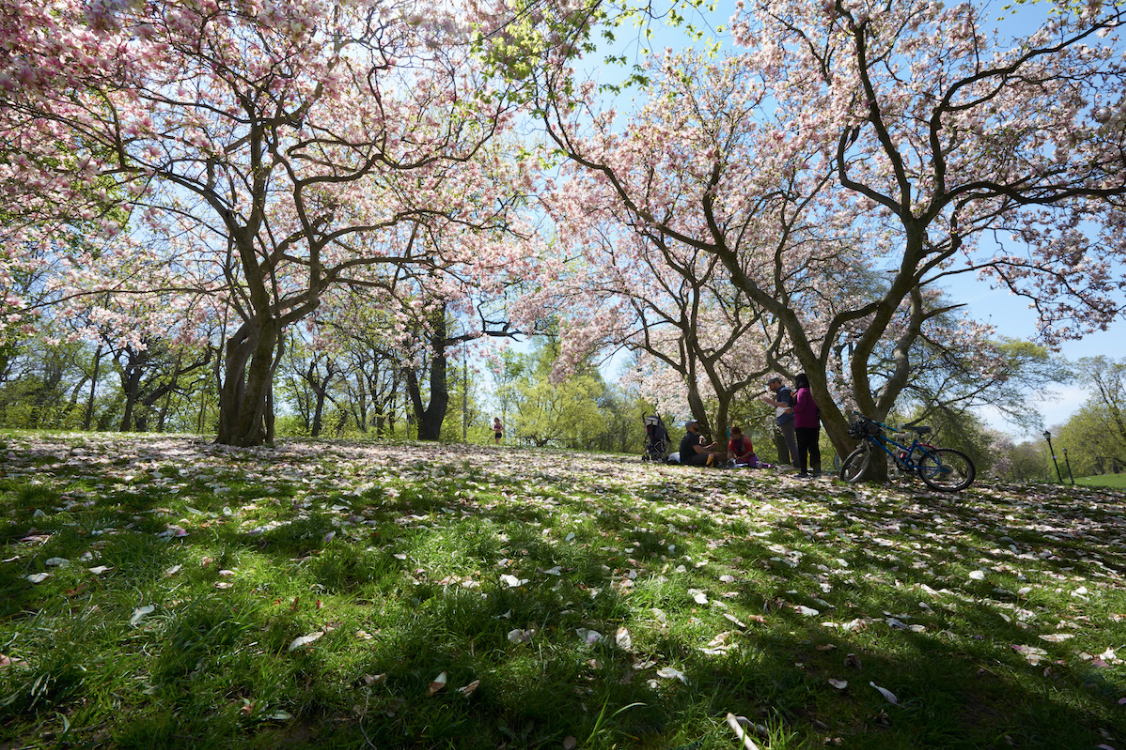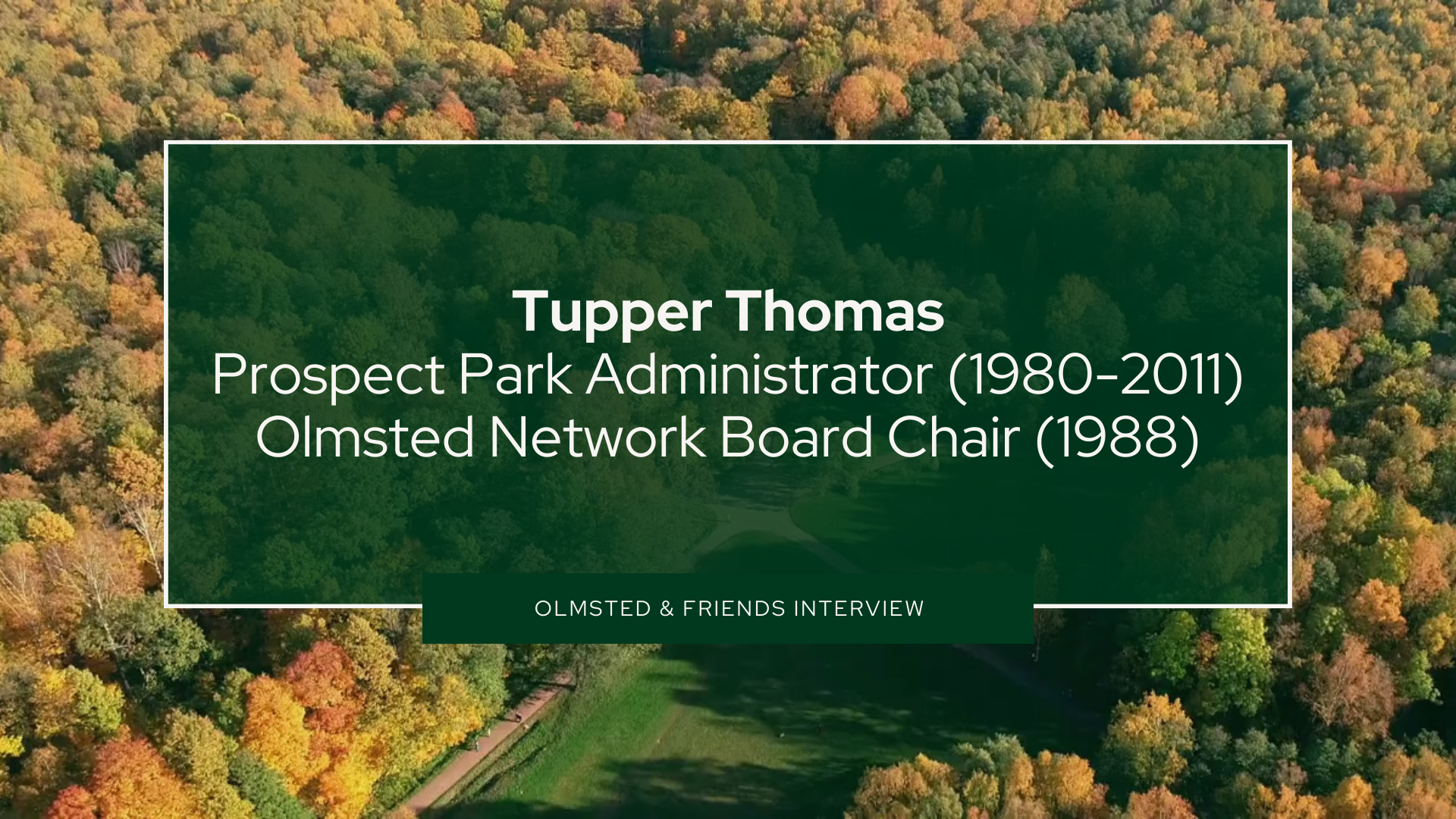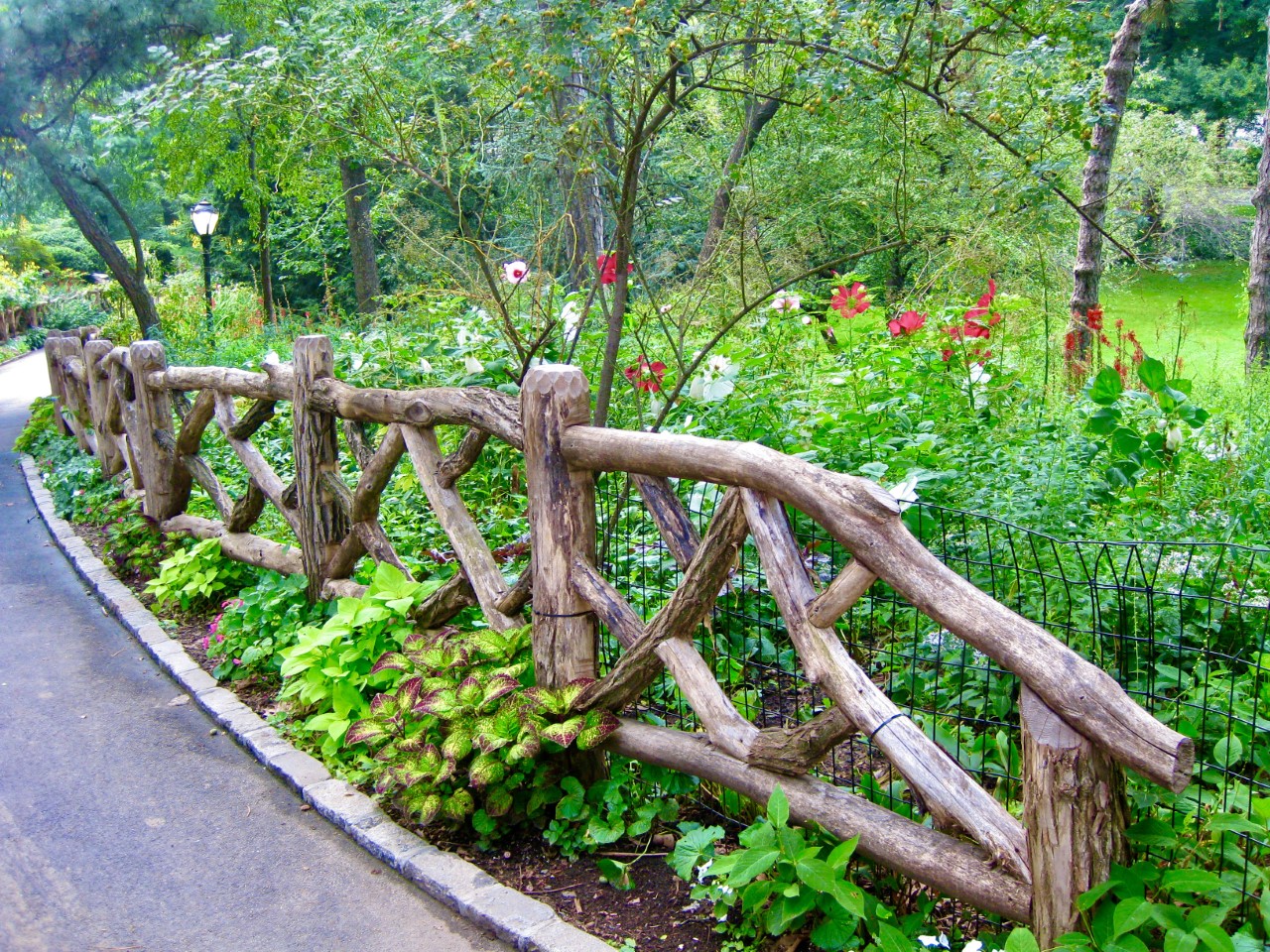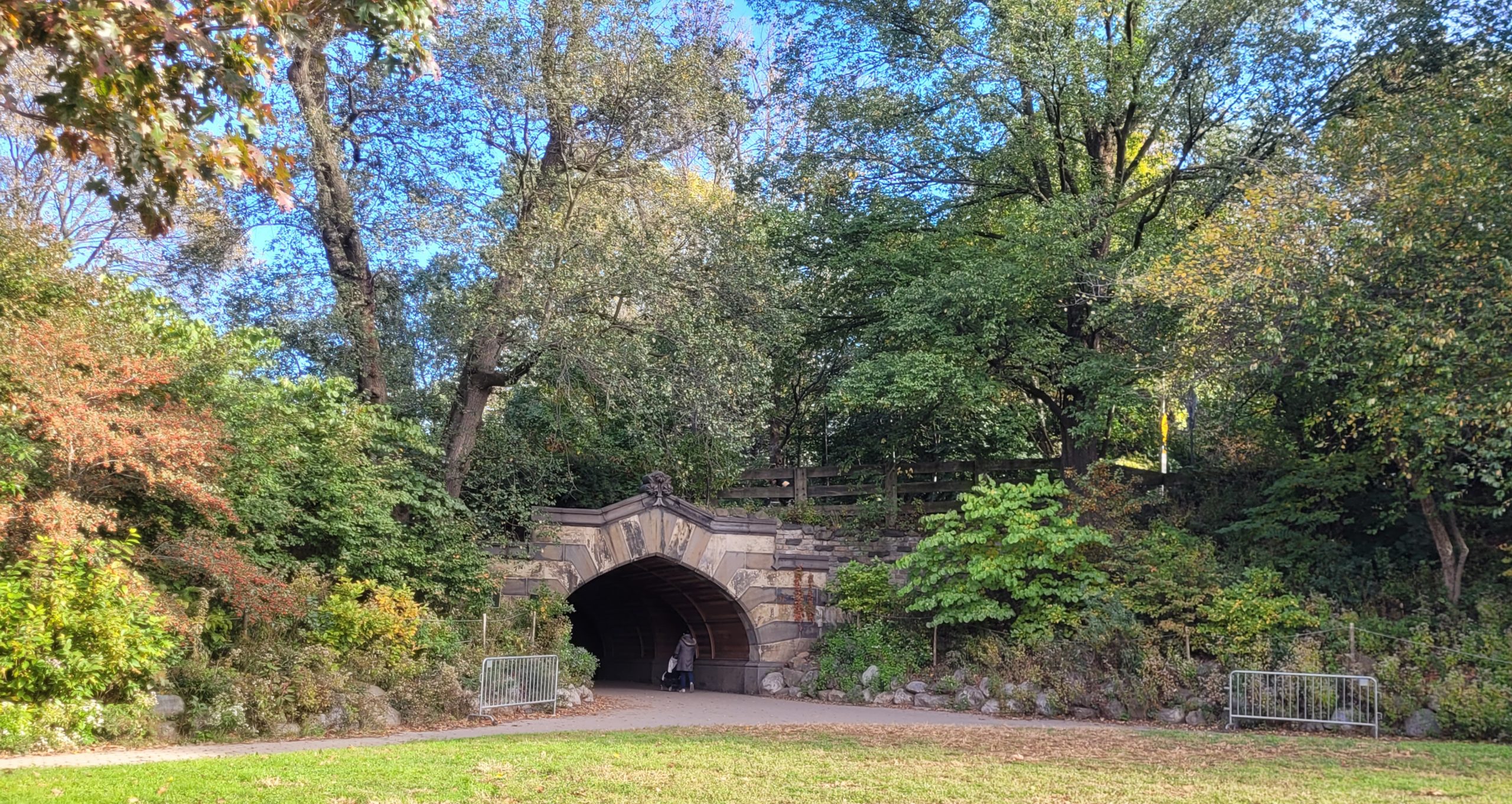
I consider working in Prospect Park a unique privilege. I’ll often look up from my labor to unexpectedly catch a familiar old sightline in a new light, and it dawns on me how lucky I am to earn a living inside an Olmsted masterpiece. But this is still Brooklyn, and it ain’t all rainbows and unicorns. Any given day of work can bring revelations of beauty or frustration, so it helps to have a deliberate, yet nimble, perspective of where I am and what I’m doing there.
“Gradually and silently the charm comes over us; we know not exactly where or how.”
I was drawn to employment as a gardener in Brooklyn’s backyard by that intangible “come hither” appeal of the landscape. Over time, I’ve learned that a more conscious understanding and appreciation of Olmsted’s design, and social philosophies, is helpful in maintaining a positive outlook in the face of some difficult challenges.
The paradoxes run deep: Timeless visions of bucolic joy on Long Meadow, perfectly framed by Endale Arch, all too often scarred by the plastic trash of modern life. Lovely reflections of autumn color on the surface of the watercourse, increasingly mirrored by scenes of floodwaters stressing a stoic old drainage system facing climate change. Children’s laughter and singing birds vs. barking dogs and roaring engines. You get the idea.
A head-down, blinders-on approach to dealing with these issues would contradict the motivation for working here; you can’t preserve the good, without facing the not so good. Consciously or not, we in the field have placed ourselves in the reality of our surroundings and can’t easily adjust conditions to suit our sensibilities or comfort levels. No matter how I think the park “should” be used, ten million annual visitors bring their own agendas.
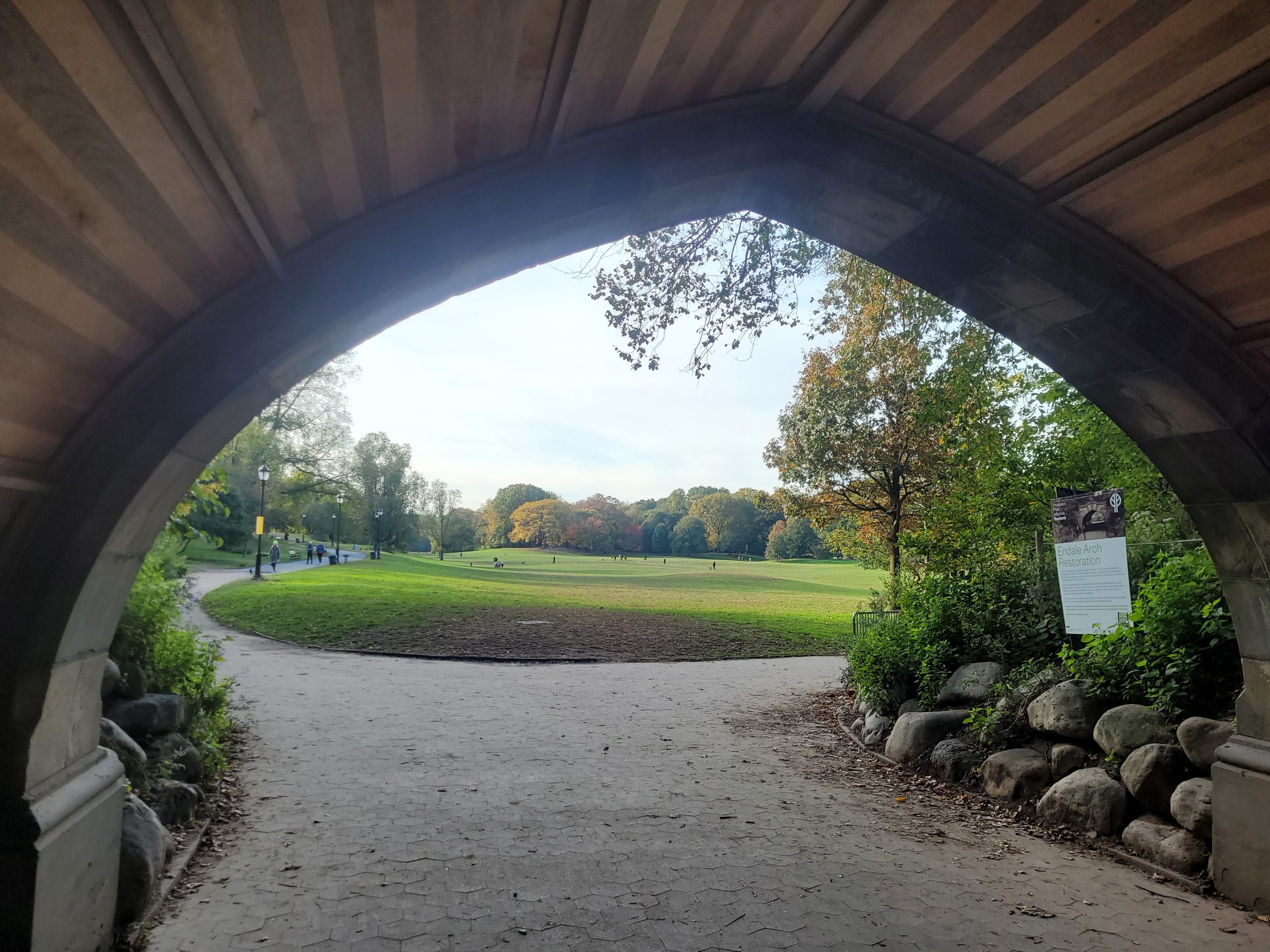
So, when the tide of aggravation is rising, I have some strategies to float through to my next moments of Olmsted-engineered bliss. Here are a few reminders to myself to go with the F.LO.:
- I recall that I’m a relative newcomer in a world of badass park advocates. From the professional staff and leadership of Prospect Park Alliance, to the dedicated core of volunteers, there is expertise and determination enough to inspire me through the most heinous of moments. More than once I’ve found myself standing in excrement, under full sun, with mosquito bites on my poison ivy rashes, hopelessly outnumbered by invasive weeds. Self pity would be gratifying, but for that
dirtyhalf-dozen septuagenarian volunteers that show up nearly every day and work like they got into Lance Armstrong’s medicine cabinet. That level of intense retiree energy, focused on the good of the landscape, reminds me I must be doing something worthwhile for my paycheck. I might also consider some of the staff well into their third and fourth decades of fighting the good fight. It is one thing to just remember the bad old days of a park in disrepair, but I work alongside colleagues who actually helped dig the park out of that abyss, back to its current state of beauty.
- Take the long view. A day outweighs an hour, a decade outweighs a year, and the lifespan of the park supersedes a career. My parents and my children have enjoyed Prospect Park, as have seven generations of Brooklynites. The likes of Walt Whitman, W.H. Auden, George Gershwin, Ruth Bader Ginsberg, Isaac Asimov, Woody Allen, Aaron Copeland, Roz Chast, Arthur Miller, Barbara Streisand, Bernie Sanders, Spike Lee, Carl Sagan, Mel Brooks, Eddie Murphy, Jay-Z and literally dozens of other impactful women and men that have shaped our world, and were shaped by the neighborhoods orbiting Prospect Park. There is no telling what branch I prune, flower I plant, or drain I clear, might somehow contribute to the formative years of a future history maker. At least this is what I try to think whenever I step in poop.
- Chaos is relative. What I might consider loud and obnoxious behavior by some park patrons is, perhaps, brought into the park for a respite from an even louder and more obnoxious environment without. “The enjoyment of the choicest natural scenes in the country and the means of recreation connected with them is thus a monopoly, in a very peculiar manner, of a very few very rich people. The great mass of society, including those to whom it would be of the greatest benefit, is excluded from it…” From this idea forms a hopeful belief that a sometimes distressed society is not harming the park, so much as the park is helping a sometimes distressed society.
- Olmsted’s work is more relevant than ever, and helping preserve it is important! Climate change, mass extinction, public health crisis, demands for overdue social justice, specific anxieties and general angst; Olmsted’s parks can not only bring relief, but serve as models for solutions. We have a living public space open to all, in the country’s largest city, demonstrating socioeconomic and cultural diversity, biodiversity, restoration of natural habitats and immeasurable mental and physical health benefits to many millions of people. It is no accident that nearly every imaginable kind of human seeks to spend time in Prospect Park, and, for the most part, gets along with one another. How and why? Because it is a brilliantly designed space — well taken care of — where people want to be.
Jesse Brody is the Eco-Zone Gardener, Lakeside, Landscape Management, for the Prospect Park Alliance.









